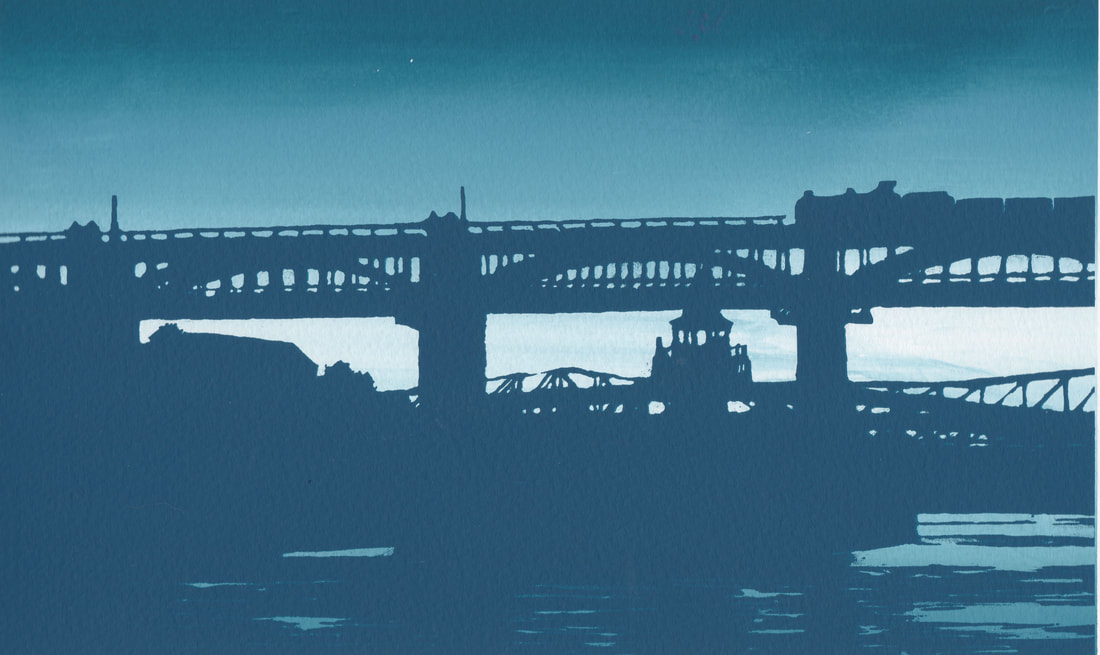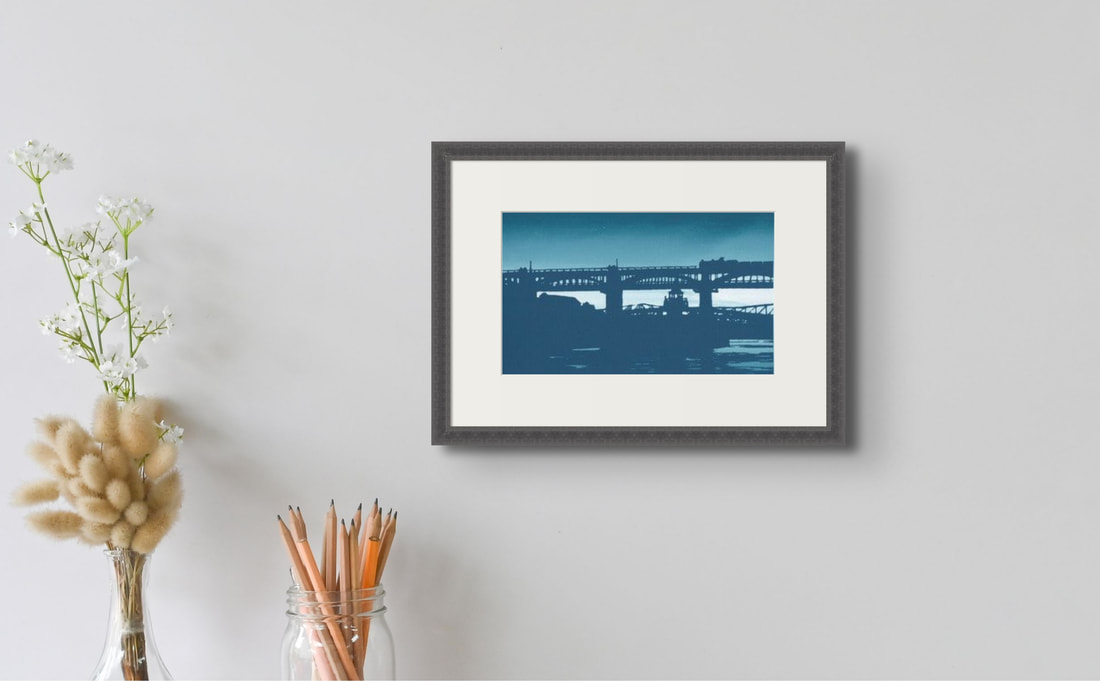High Level Bridge by Ian Scott Massie
Variable Edition Reduction Screen Print - Edition of 13
16" x 12" Mounted size - 10.5" x 6.5" Image size
Available: unframed @ £130
To shop, please click here
16" x 12" Mounted size - 10.5" x 6.5" Image size
Available: unframed @ £130
To shop, please click here
THE HIGH LEVEL BRIDGE
As I walk along the quayside in Newcastle I’m surrounded by memories. This is a place I’ve been so happy on so many occasions and my pleasure is heightened by the incredible scale of the bridges which span the Tyne. It’s exhilarating! The High Level Bridge is my favourite: an extraordinary creation of imaginative design, aesthetic beauty and architectural ingenuity.
In 1835, a railway linking Newcastle and Carlisle was given permission for a bridge to span the Tyne. The initial idea was to have a low level bridge from the end of which a steam-driven rope-haulage system would drag trains up the 1 in 22 incline to the station.
However, various profit-hungry companies were eyeing up the possibilities of connections to York, Edinburgh and, more locally, Gateshead. In 1841 a high level bridge for road traffic was proposed which became linked with the project to carry the railway. To help persuade the Newcastle authorities to support the scheme George Hudson, the principal entrepreneur behind the bridge, also proposed adding a foot crossing.
The High Level Bridge was designed by Robert Stephenson, carrying the railway 37m above the waters of the Tyne. The bridge comprises a railway on the top deck, with road traffic and a footpath on the lower deck. The construction, of cast and wrought iron components on stone piers, uses a complex repertoire of arches, suspension rods and tie bars to distribute the forces of the various elements. Although the Tyne is only 1m deep under the bridge at low tide, the bedrock lies a further 9m down. It was one of those clever Victorian inventions, the Nasmyth Steam Pile Driver, which enabled the supporting piles to be driven beneath the waters.
The opening of the High Level in 1849 - the world’s first bridge to combine road, rail and passenger traffic - was celebrated by the passing of a special train over the bridge accompanied by a band playing The Keel Row.
In 1835, a railway linking Newcastle and Carlisle was given permission for a bridge to span the Tyne. The initial idea was to have a low level bridge from the end of which a steam-driven rope-haulage system would drag trains up the 1 in 22 incline to the station.
However, various profit-hungry companies were eyeing up the possibilities of connections to York, Edinburgh and, more locally, Gateshead. In 1841 a high level bridge for road traffic was proposed which became linked with the project to carry the railway. To help persuade the Newcastle authorities to support the scheme George Hudson, the principal entrepreneur behind the bridge, also proposed adding a foot crossing.
The High Level Bridge was designed by Robert Stephenson, carrying the railway 37m above the waters of the Tyne. The bridge comprises a railway on the top deck, with road traffic and a footpath on the lower deck. The construction, of cast and wrought iron components on stone piers, uses a complex repertoire of arches, suspension rods and tie bars to distribute the forces of the various elements. Although the Tyne is only 1m deep under the bridge at low tide, the bedrock lies a further 9m down. It was one of those clever Victorian inventions, the Nasmyth Steam Pile Driver, which enabled the supporting piles to be driven beneath the waters.
The opening of the High Level in 1849 - the world’s first bridge to combine road, rail and passenger traffic - was celebrated by the passing of a special train over the bridge accompanied by a band playing The Keel Row.





